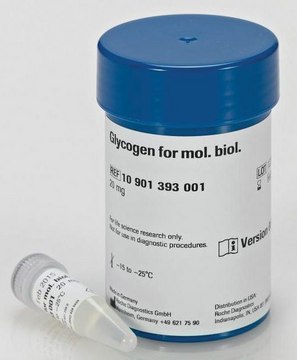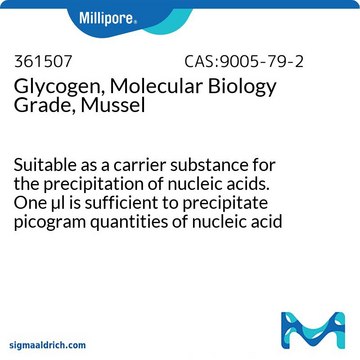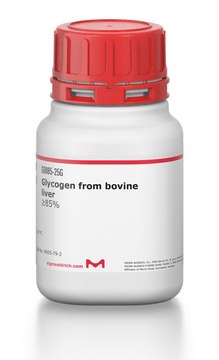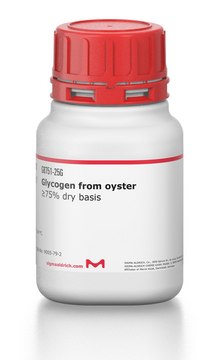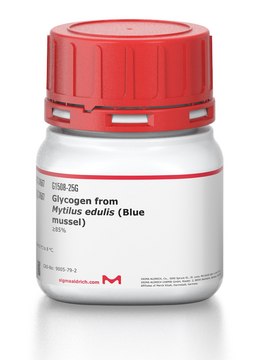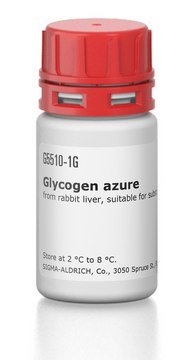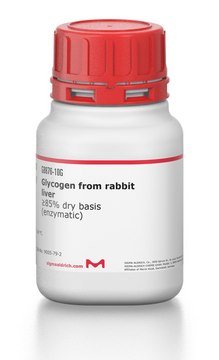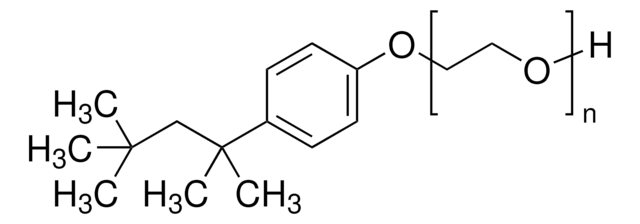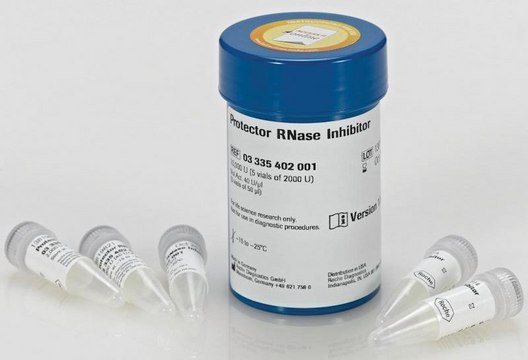G1767
Glycogen from mussel, Mytilus genus
for DNA precipitations
Synonym(s):
DNA and RNA precipitation
About This Item
Recommended Products
grade
for molecular biology
Quality Level
form
liquid
packaging
vial of 1 mL
concentration
19-22 mg/mL
storage temp.
−20°C
InChI
1S/C24H42O21/c25-1-5-9(28)11(30)16(35)22(41-5)39-4-8-20(45-23-17(36)12(31)10(29)6(2-26)42-23)14(33)18(37)24(43-8)44-19-7(3-27)40-21(38)15(34)13(19)32/h5-38H,1-4H2/t5-,6-,7-,8-,9-,10-,11+,12+,13-,14-,15-,16-,17-,18-,19-,20-,21+,22+,23-,24-/m1/s1
InChI key
BYSGBSNPRWKUQH-UJDJLXLFSA-N
Looking for similar products? Visit Product Comparison Guide
General description
Application
- as a coprecipitant in the isolation of RNA from hepatocytes and yeast cells.
- as a reference standard in calibration curve generation to quantify hepatic glycogen content.
- as a carrier molecule for DNA and RNA, replacing tRNA or sonicated DNA
- for the precipitation of DNA in the presence of ammonium acetate and ethanol or isopropanol
- for recovery of tRNA, yeast RNA, sonicated DNA and oligonucleotides as short as 8 base pairs
Biochem/physiol Actions
Features and Benefits
- product provided is 1 mL total volume
- precipitates even small amounts of DNA and RNA present in dilute solutions
- does not interfere with OD 260/280 readings
Principle
related product
Storage Class Code
11 - Combustible Solids
WGK
WGK 3
Flash Point(F)
Not applicable
Flash Point(C)
Not applicable
Personal Protective Equipment
Regulatory Information
Choose from one of the most recent versions:
Certificates of Analysis (COA)
Don't see the Right Version?
If you require a particular version, you can look up a specific certificate by the Lot or Batch number.
Already Own This Product?
Find documentation for the products that you have recently purchased in the Document Library.
Our team of scientists has experience in all areas of research including Life Science, Material Science, Chemical Synthesis, Chromatography, Analytical and many others.
Contact Technical Service